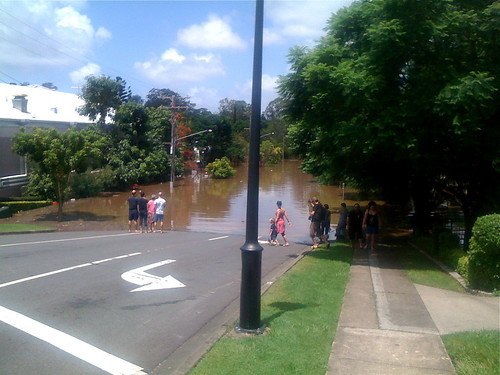The importance of walkable destinations in an emergency

Posted January 21, 2011 at 1:23PM
Today I am simply going to point you to an extraordinary personal account of the massive flooding in Brisbane, Australia last week. The writer is Dan Hill, a designer and urbanist based in Sydney, who happened to be in Brisbane when the waters hit, and it is posted on his blog cityofsound.
The whole essay is fantastic, but I am particularly struck by this passage:
“In Beirut, due to the variability of its fabric, everyday needs have to be met locally, as you're never sure whether a road will be there or not. As a result, there is what you might call 'network redundancy' i.e. every few streets has a grocers, bakers, coffee shop, ironmongers, tailors etc. etc. This, as opposed to the centralised and consolidated model of western cities, most obviously visible in the out-of-town mall accessed by car, with all the apparent economies of scale that entails. Yet the former is actually more resilient, for sure. ... It would have been better to have been in a place with a walkscore of something approaching 100 (see walkscore.com.) But there is nothing around us, barely pavements, and now the connecting infrastructure of roads is so easily compromised.”
In other words, if the roads are impassable, you especially need walkable, neighborhood-based localism.
Writing on Grist, Jess Zimmerman, whose excellent post excerpted Hill’s, puts it this way:
“If you need to drive to it, it might as well not exist: Walkability is important for quality of life, but in a disaster, it may be life and death. If you live in the urban sprawl, you're SOL if you can't get to a mall or downtown, because that's where all the necessary stuff is. Cities are more resilient when the stuff you need can be found on a small scale from neighborhood to neighborhood, not all clumped together in a megamall.”
Zimmerman is also right on target when she describes Hill’s article, which ranges well beyond walkability but is compelling throughout, as “a melding of Twitter recap, photo essay, and thoughtful exegesis on the problems of modern city design.” He’s not just a good but a terrific writer, and now I want to read more of his blog, as much for the intriguing literary (Alain de Botton, Geoff Dyer) and musical (Bill Frisell, Philip Glass) notes as for commentary on sustainability.
Thanks to Liz Heyd for leading me to these great articles.
Move your cursor over the images for credit information.
